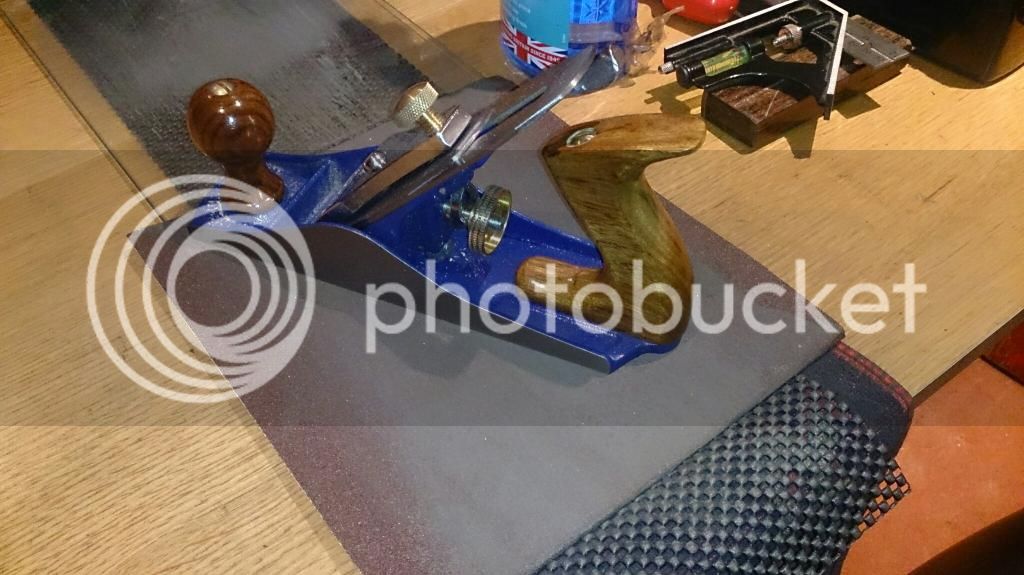bugbear
Established Member
I've neer lked so-called-lapping:
1) Your reference surface needs to be much more accurate than the accuracy you want on your plane. It also needs to allow a working stroke of around twice the tool length. Most people's surface fail to meet this requirment.
2) (woodworkers' ) Lapping has a distinct tendancy to dub the ends. Whilst rubbing a tool on a flat, uniformly abrasive surface cannot make the tool hollow, it can easily make it convex, just as a flat plane can make a wooden workpiece convex.
3) Abrasive sheets tend to wear more in the middle, leading to (more!) dubbing at the sides and ends.
Here, from my long defunct webpage, is my description of how best to flatten your plane, should you want to:
Here's my orginal;
http://web.archive.org/web/200905291005 ... atten.html
Here's my "shiny and new"
http://web.archive.org/web/200901141057 ... heory.html
http://web.archive.org/web/200901141455 ... ctice.html
(mind you, according to a Paul Sellers video, flattening is easy - around 60 seconds on 80 grit. Seems
a little dubious to me)
BugBear
1) Your reference surface needs to be much more accurate than the accuracy you want on your plane. It also needs to allow a working stroke of around twice the tool length. Most people's surface fail to meet this requirment.
2) (woodworkers' ) Lapping has a distinct tendancy to dub the ends. Whilst rubbing a tool on a flat, uniformly abrasive surface cannot make the tool hollow, it can easily make it convex, just as a flat plane can make a wooden workpiece convex.
3) Abrasive sheets tend to wear more in the middle, leading to (more!) dubbing at the sides and ends.
Here, from my long defunct webpage, is my description of how best to flatten your plane, should you want to:
Here's my orginal;
http://web.archive.org/web/200905291005 ... atten.html
Here's my "shiny and new"
http://web.archive.org/web/200901141057 ... heory.html
http://web.archive.org/web/200901141455 ... ctice.html
(mind you, according to a Paul Sellers video, flattening is easy - around 60 seconds on 80 grit. Seems
a little dubious to me)
BugBear





